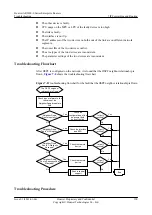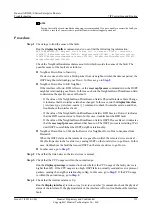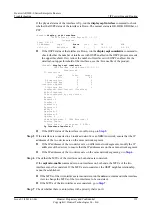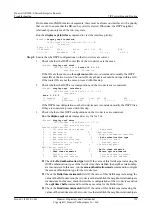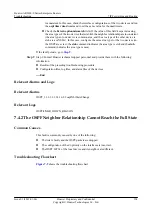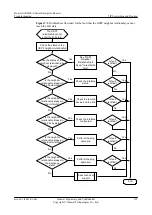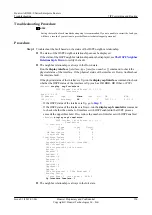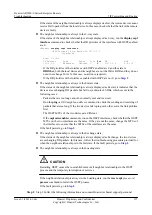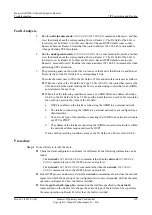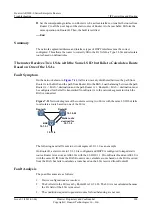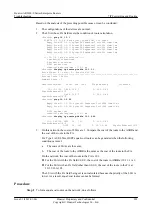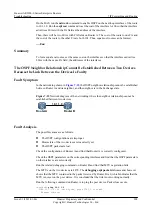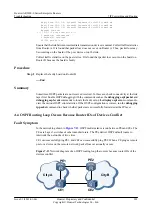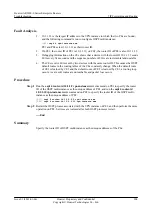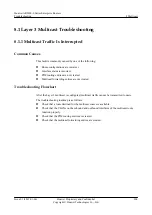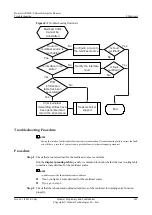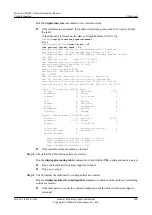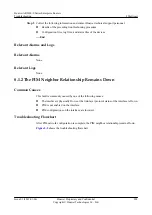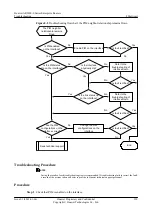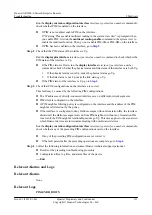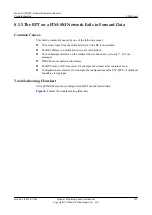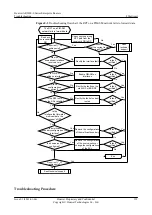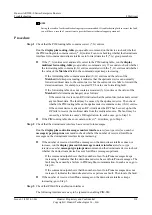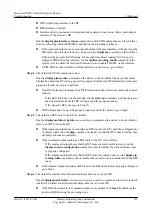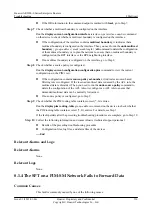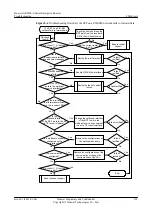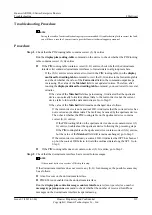
Fault Analysis
1.
10.1.1.33 is the largest IP address in the VPN instance to which the two PEs are bound,
and the following command is run to configure OSPF multi-instance:
<PE1>
ospf 4 vpn-instance www
PE1 and PE2 select 10.1.1.33 as their router ID.
2.
On CE1, the router ID of PE1 is 10.1.1.33; on CE2, the router ID of PE2 is also 10.1.1.33.
3.
Debugging information on the CEs shows that a device with the router ID 10.1.1.33 sends
LSAs every five seconds and the sequence numbers of LSAs are incremental and unstable..
4.
The CEs receive LSAs sent by two devices with the same router ID. This causes the OSPF
default routes in the routing tables of the CEs constantly change. When the default route
of CE1 is learned by CE2 and the default route of CE2 is learned by CE1, a routing loop
occurs. As a result, routes are unreachable and packet loss occurs.
Procedure
Step 1
Run the
ospf 4 router-id 10.2.2.9 vpn-instance www
command on PE1 to specify the router
ID of the OSPF multi-instance as the unique address of PE1, and run the
ospf 4 router-id
10.2.2.10 vpn-instance www
command on PE2 to specify the router ID of the OSPF multi-
instance as the unique address of PE2.
[PE1]
ospf 4 router-id 10.2.2.9 vpn-instance www
[PE2]
ospf 4 router-id 10.2.2.10 vpn-instance www
Step 2
Restart the OSPF process associated with the VPN instance on PE1, and then perform the same
operation on PE2. Services are restored after both OSPF processes restart.
----End
Summary
Specify the router ID of OSPF multi-instance as the unique addresses of the PEs.
Huawei AR2200-S Series Enterprise Routers
Troubleshooting
7 IP Forwarding and Routing
Issue 01 (2012-01-06)
Huawei Proprietary and Confidential
Copyright © Huawei Technologies Co., Ltd.
204

